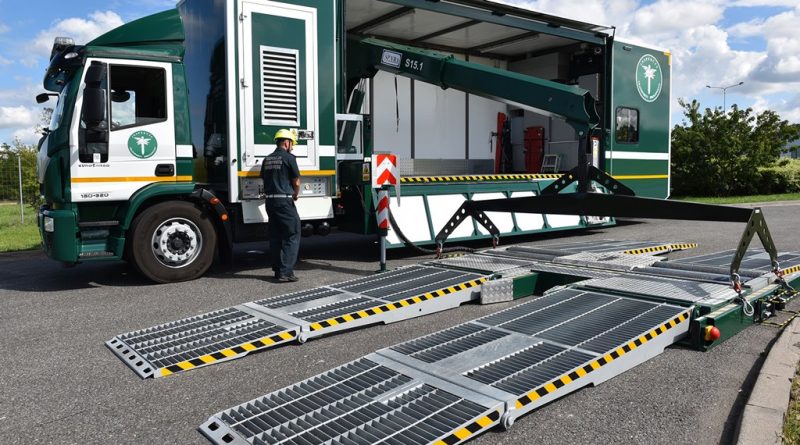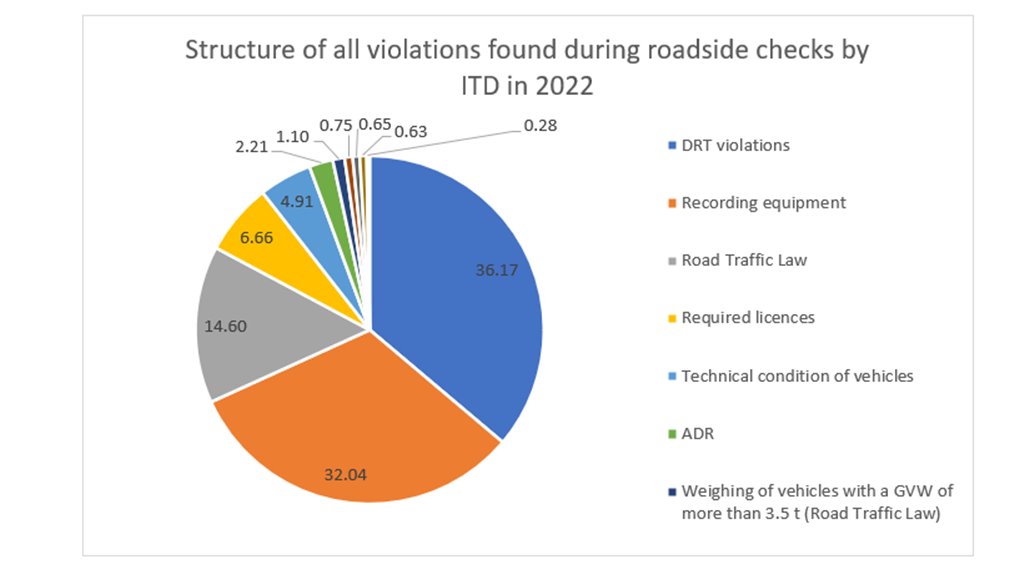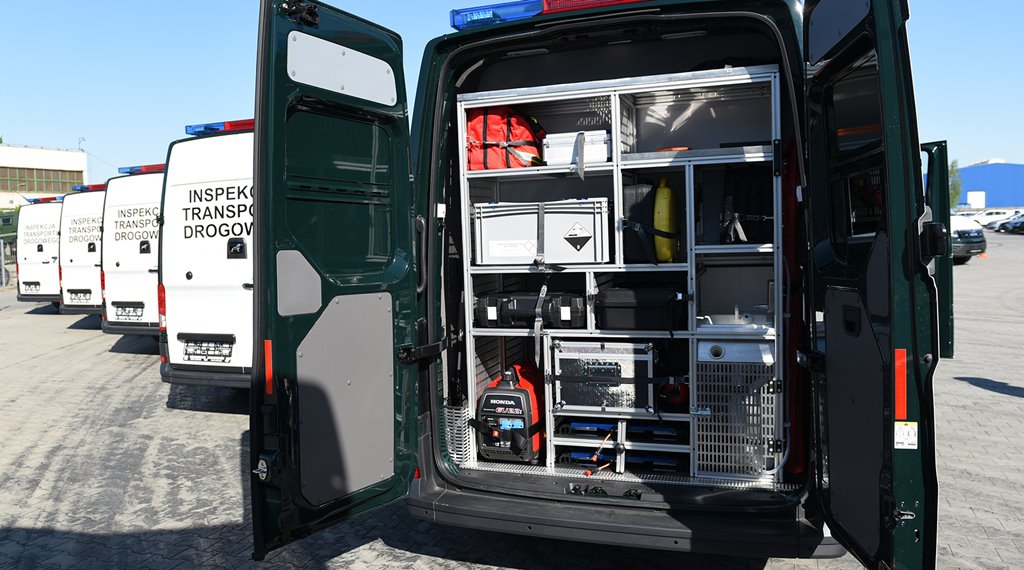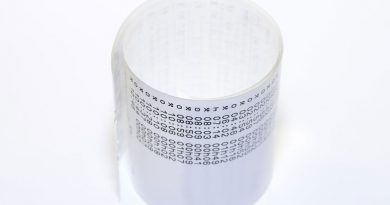ITD inspected over 2,500 Serbian vehicles – Polish Inspectorate talks about actions schedule, statistics, plans in an interview for PlutonLogistics
Have you ever been pulled over by ITD and what are your experiences with these inspections? Every year, officers of the Polish Road Transport Inspection carry out between 160-170,000 inspections on the road, of which the largest part (over 80%) are inspections of the carriage of goods. Poland is a country where the transport business is one of the most vital economic branches. At the same time, it is an important point on the routes between the east and the west of Europe.
While the authorities stress that controls are important not just for safety, but also as a guarantee of fair competition, neither drivers nor carriers are fond of finding themselves under the scrutiny of inspectors. It’s no secret that ITD is quite fearsome and formidable on the road.
Another characteristic of the Polish inspection is that it regularly and in detail informs the public about its activities and recorded violations – such news items often receive a large number of comments from our readers, especially when Serbian vehicles are involved.
Did you know that Polish road transport inspectors can go to the field at the request of a private person? How are the road sections to be inspected selected? How many people actually work in these services? What should you do if you think you have been unjustly punished? How many carriers from Serbia did ITD inspect in 2023? What are the most common violations committed by our drivers and are there any differences among colleagues across Europe?
In an exclusive interview for the PlutonLogistics portal, representatives of the General Inspectorate of Road Transport of Poland (Główny Inspektorat Transportu Drogowego) provided answers to all these questions.
PL: How do you plan your field activities/road traffic inspection controls? Are there precisely defined control periods? Are ITD controls performed daily?
– Control plans are developed taking into account several factors, such as provincial and national activities; the National Strategy for the Control of the Regulations on Driving and Stopping Times, Compulsory Breaks and Rest Hours of Drivers; directions of activity of the Inspection; directions of WITD activities; traffic volume and structure on individual road sections; results and findings of inspections carried out; recommendations and guidelines of the Chief Road Transport Inspector; reasonable requests for roadside checks made by public authorities and private persons.
The scheduling of the inspectors’ work should ensure that the inspection teams are used evenly from Monday to Friday. If the needs of the fulfillment of the inspection tasks so require, the inspections are also carried out at night and on Saturdays, Sundays, and holidays.
PL: How many inspection controls on the road have been carried out so far in 2023? How many vehicles have been checked? Does the number of performed controls increase from year to year?
– In recent years, the Road Transport Inspectorate performs approximately 165,000 – 170,000 inspections per year. These figures do not take into account other tasks of the Inspectorate, i.e. inspections of electronic toll collection and automatic traffic surveillance – speed cameras.
In 2020 – 2022 and in 2023, the annual inspection plan was reduced due to inspection restrictions caused by the coronavirus epidemic and also due to restrictions on eastbound traffic due to the outbreak of war in Ukraine. In previous years there were instances of more than 200,000 controls being carried out.
However, it should be borne in mind that the planned value of inspections is influenced in particular by the number of inspectors, and this is variable and has had a downward trend. More recently – in 2022 and 2023 – this number is increasing due to recruitments related to the new tasks resulting from Mobility Package I. The inspection structure is at a similar level each year and is as follows – approx. 85% are inspections of the carriage of goods, while approx. 15% checks on passenger transport.
PL: What do the statistics say when it comes to the offenses in road freight transport? Which are the most frequently recorded violations?
– Statistics show that the group of the most frequently ascertained infringements includes violations in the scope of drivers’ working time, correct use of recording devices violations, violations of the Road Traffic Law (technical condition of vehicles, authorizations, weighing of vehicles under 3.5 t) and violations related to the requirements concerning the possession of documentation/authorizations of drivers, carriers, transport managers during roadside checks.
Speaking of specific figures, in 2022, road transport inspectors carried out 163,780 road checks finding 119,190 infringements of regulation. The largest number of violations, over 36% or 43,108, were related to the drivers’ failure to comply with the regulations on driving time and compulsory breaks and rests. Around 32 % or 38,190 of the violations were related to the incorrect use of the tachograph, that is, the recording equipment.
PL: Do you notice certain trends?
– For years, infringements relating to drivers’ working time and infringements relating to irregularities in the use of tachographs have been detected by the Road Transport Inspectorate inspectors at an unchanged high level. About 70%-80% in total.
In general, it can be pointed out that every change in the regulations (e.g. adding sanctions) results in an increase in their perpetration by drivers and haulers – e.g. recent violations related to the implementation and enforcement of the Mobility Package.
PL: What our readers are most interested in is the statistics on the number of controlled vehicles of Serbian carriers. How many of such vehicles have been controlled in 2023 or 2022? What are the most frequently recorded violations by drivers and carriers from Serbia?
– In 2022, the number of inspections of Serbian carriers carried out was 2,472. By 19 November 2023, a total of 2,585 such inspections were carried out. In the previous year, 1,336 infringements were found, and this year, by 19 November 2023, – 1,152.
Using 2022 as an example, 60% (798) of violations related to working time standards, around 29% (386) were infringements related to recording equipment, while 5% (70) concerned documentation, licenses, certificates, or permits.
PL: In 2023, your service implemented the project “Strengthening the potential of the formation’s control”, during which a large number of new vehicles and equipment were acquired… What are your expectations of this improvement?
– This project, co-financed by the European Union, is one of the largest projects in the history of the Polish Road Transport Inspection.
The main objective was to improve road safety by increasing the effectiveness of ITD’s control activities, in connection with the purchase of modern equipment and vehicles. A total of 74 vans with bodywork and specialized equipment, 16 Mobile Diagnostic Units, and 64 specialized vehicle and tachograph inspection kits were delivered to all Regional Road Transport Inspectorates.
The fixed assets purchased under the project serve to increase the effectiveness of the Road Transport Inspection’s activities in ensuring safety on Polish roads, as well as the principles of fair competition in road transport and eliminating technically faulty and overloaded vehicles from traffic.
PL: If the driver or carrier does not agree with the imposed fine, that is, if he considers that he has been unjustly punished, what further steps can be taken – after the completion of the inspection by ITD?
– According to national legislation, in the event of refusal to accept a criminal fine or failure to pay a fine imposed by a fine in absentia within the prescribed period, the authority whose officer imposed the fine shall apply to the court for a penalty.
A valid criminal fine is subject to immediate revocation if the fine was imposed for an act that is not a prohibited act as an offence or on a person who committed an offence before the age of 17, or if the law provides that the perpetrator does not commit an offence for reasons referred to in the Code of Offences. The revocation takes place at the request of the punished person, his/her statutory representative, or legal guardian submitted no later than within 7 days from the mandate becoming final, or at the request of the authority whose officer imposed the fine, or ex officio.
In the case of a penalty imposed on an entrepreneur by way of an administrative decision, the final decision shall be enforceable after 30 days from the date of its delivery, unless its enforcement has been suspended. The entrepreneur is entitled to lodge an appeal against the issued administrative decision. The appeal must be lodged within 14 days from the date of delivery of the issued decision to the party.
WHO CONTROLS ROAD TRAFFIC IN POLAND?
Speaking of the organization of the road traffic inspection itself, in Poland, it is quite complex, bearing in mind the different degrees of organization at the level of provinces (duchies), as well as at the level of the country. In short, it is organized in the following manner:
The Chief Inspector of Road Transport is a body of the central state administration, which is subordinate to the Minister of Transport. He is in charge of the General Inspectorate of Road Transport (Department for International Transport, Department for Inspection Supervision, Automatic Road Traffic Supervision Center, and Department of Electronic Toll Collection). The Chief Inspector also oversees the Regional Road Traffic Inspections (WITD – 16 in total), which in turn are directly subordinate to the duchy. All 16 WITDs are part of the Road Traffic Inspection within the regional administration. At the end of July, all 16 regional road traffic inspections (WITD) employed a total of 529 inspectors.
Other bodies authorized to control roads in Poland are the National Revenue Administration, Police, Border Security, and State Labor Inspectorate.








